Abstract
Plants must be established quickly on replenished beaches in order to stabilize the sand and begin the dune-building process. The objective of this research was to determine whether inoculation of sea oats (Uniola paniculata L.) with bacteria (indigenous rhizosphere bacteria and N2 fixers) alone or in combination with vesicular-arbuscular mycorrhizal fungi would enhance plant growth in beach sand. At two fertilizer-N levels, Klebsiella pneumoniae and two Azospirillum spp. did not provide the plants with fixed atmospheric N; however, K. pneumoniae increased root and shoot growth. When a sparingly soluble P source (CaHPO4) was added to two sands, K. pneumoniae increased plant growth in sand with a high P content. The phosphorus content of shoots was not affected by bacterial inoculation, indicating that a mechanism other than bacterially enhanced P availability to plants was responsible for the growth increases. When sea oats were inoculated with either K. pneumoniae or Acaligenes denitrificans and a mixed Glomus inoculum, there was no consistent evidence of a synergistic effect on plant growth. Nonetheless, bacterial inoculation increased root colonization by vesicular-arbuscular mycorrhizal fungi when the fungal inoculum consisted of colonized roots but had no effect on colonization when the inoculum consisted of spores alone. K. pneumoniae was found to increase spore germination and hyphal growth of Glomus deserticola compared with the control. The use of bacterial inoculants to enhance establishment of pioneer dune plants warrants further study.
Full text
PDF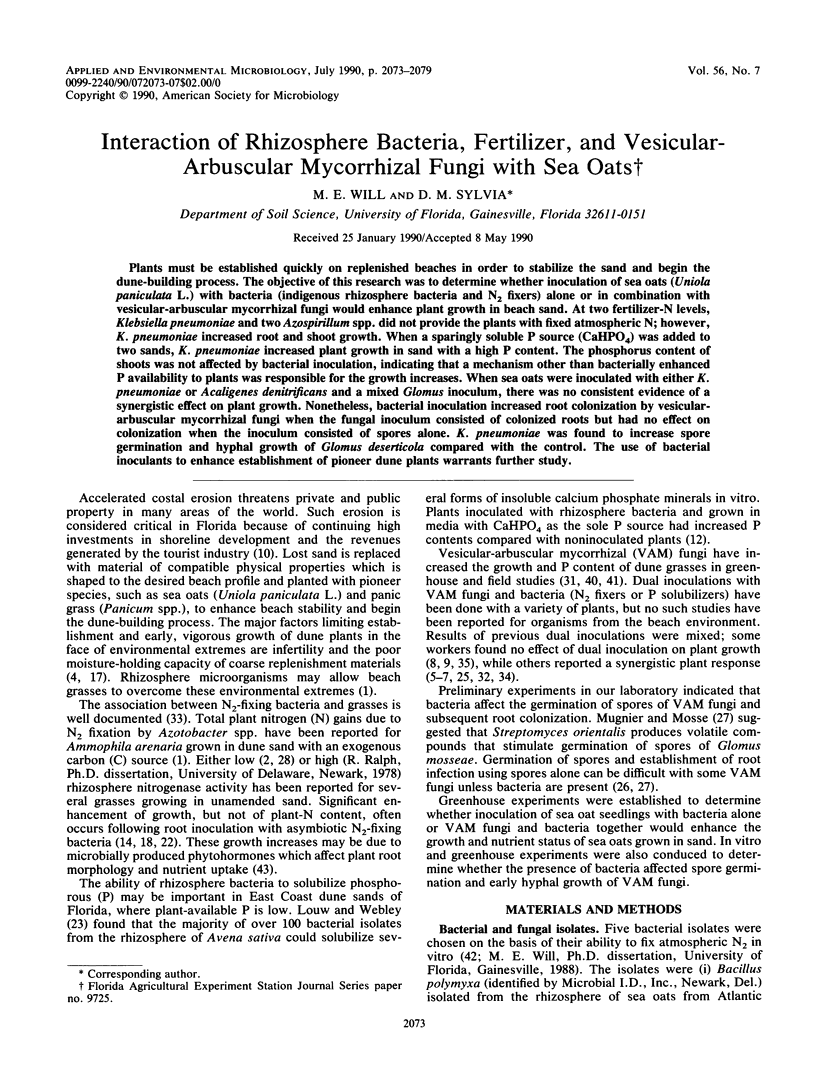
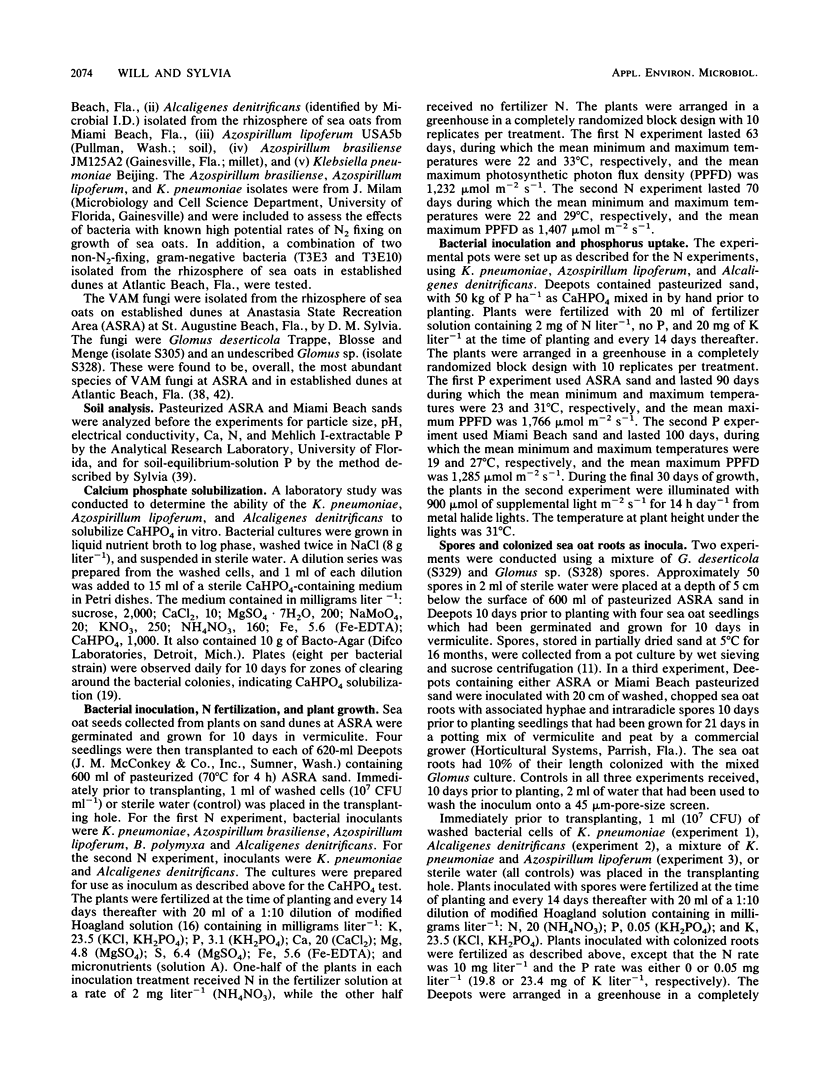

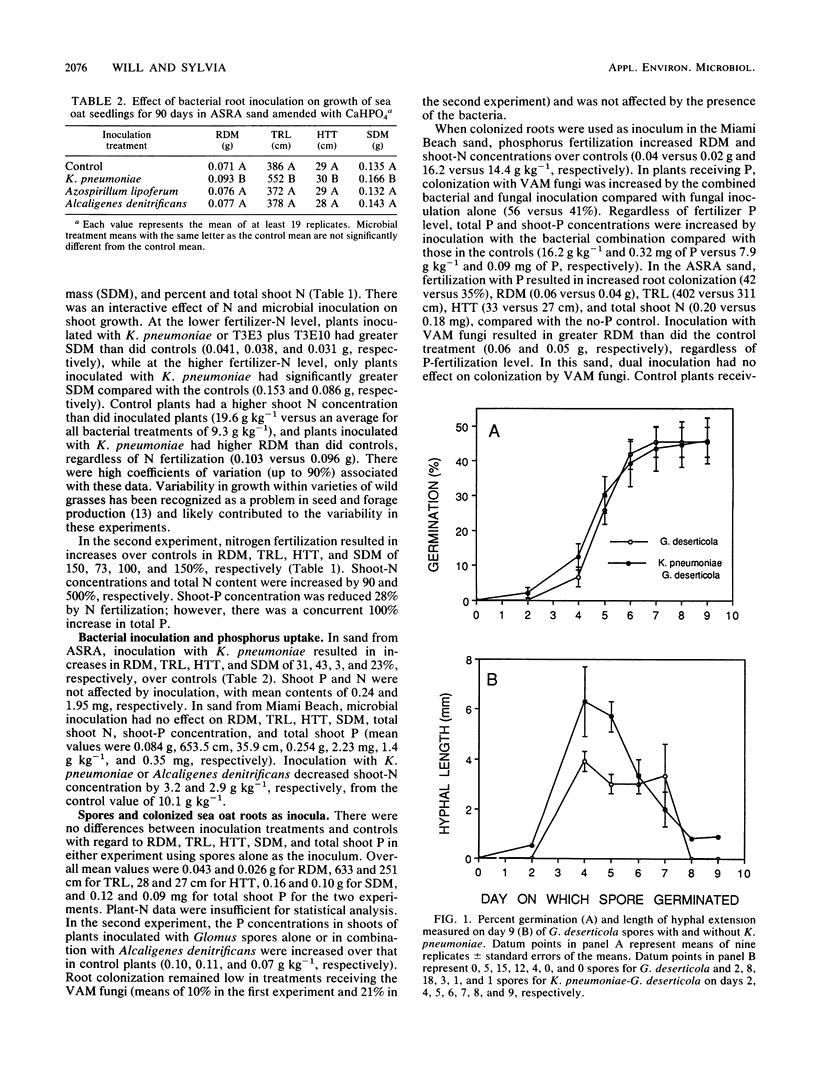
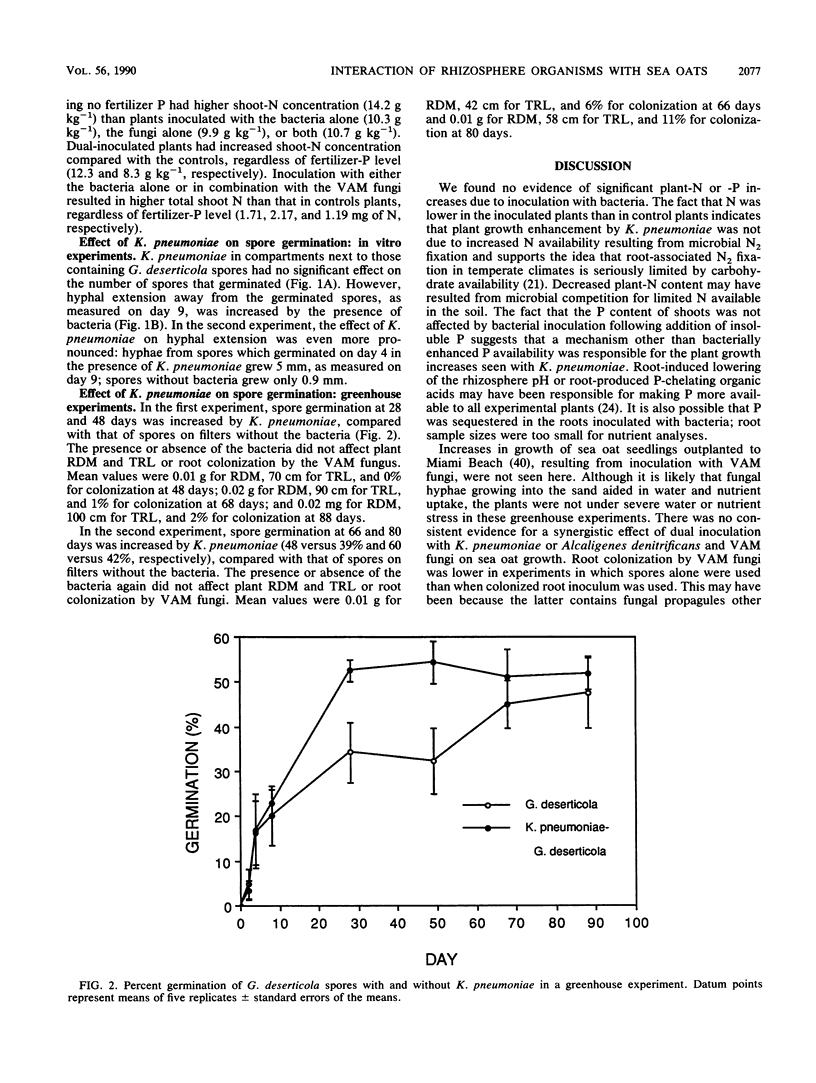
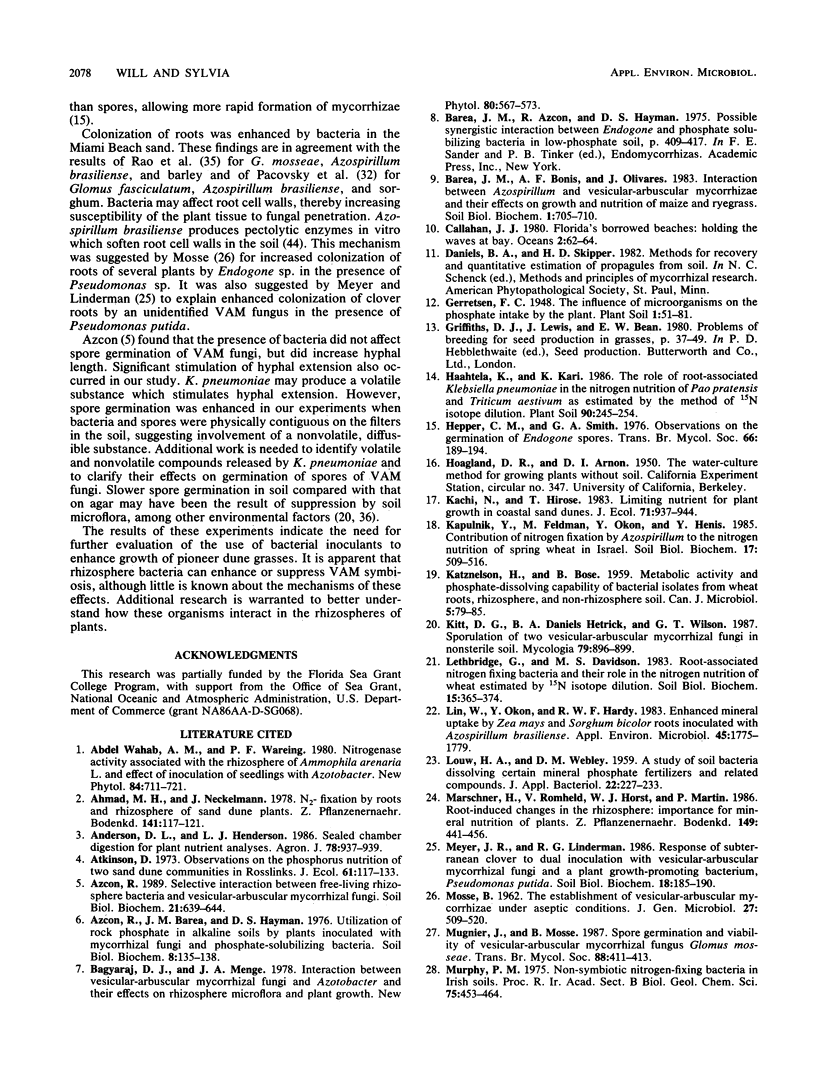
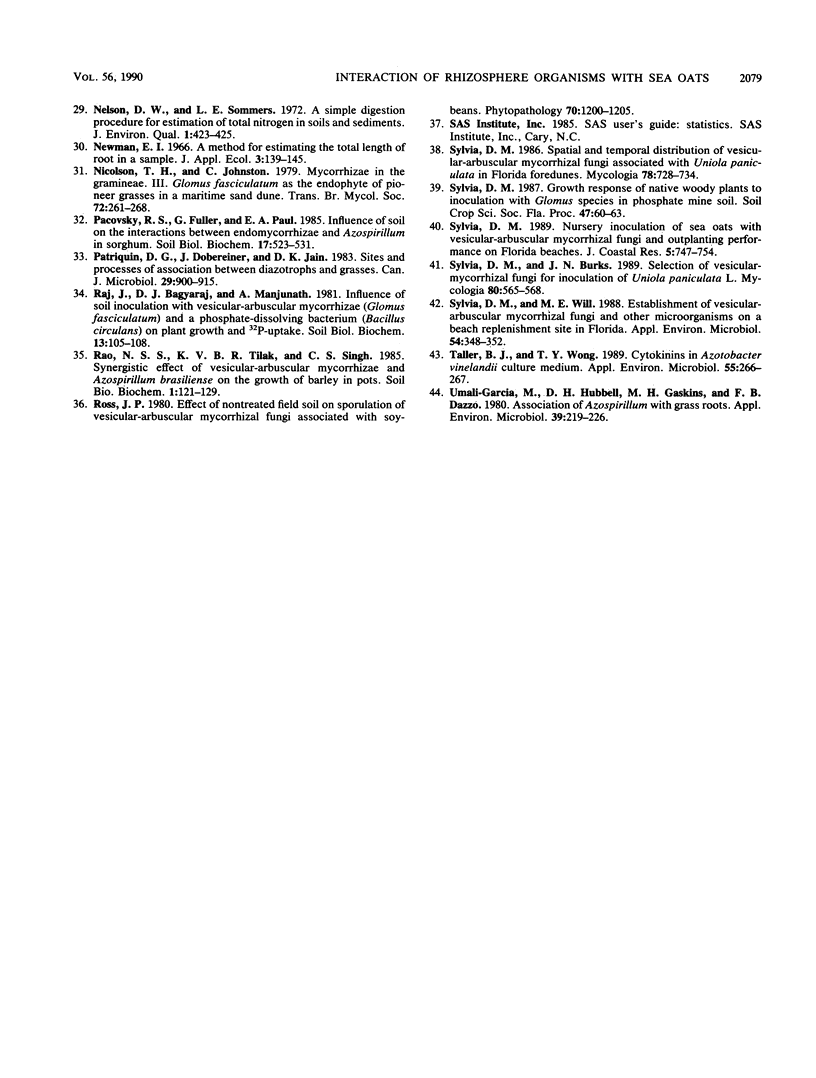
Selected References
These references are in PubMed. This may not be the complete list of references from this article.
- KATZNELSON H., BOSE B. Metabolic activity and phosphate-dissolving capability of bacterial isolates from wheat roots, rhizosphere, and non-rhizosphere soil. Can J Microbiol. 1959 Feb;5(1):79–85. doi: 10.1139/m59-010. [DOI] [PubMed] [Google Scholar]
- Lin W., Okon Y., Hardy R. W. Enhanced Mineral Uptake by Zea mays and Sorghum bicolor Roots Inoculated with Azospirillum brasilense. Appl Environ Microbiol. 1983 Jun;45(6):1775–1779. doi: 10.1128/aem.45.6.1775-1779.1983. [DOI] [PMC free article] [PubMed] [Google Scholar]
- MOSSE B. The establishment of vesicular-arbuscular mycorrhiza under aseptic conditions. J Gen Microbiol. 1962 Mar;27:509–520. doi: 10.1099/00221287-27-3-509. [DOI] [PubMed] [Google Scholar]
- Murphy P. M. Non-symbiotic nitrogen-fixing bacteria in Irish soils. Proc R Ir Acad B. 1975;75(22):453–464. [PubMed] [Google Scholar]
- Sylvia D. M., Will M. E. Establishment of vesicular-arbuscular mycorrhizal fungi and other microorganisms on a beach replenishment site in Florida. Appl Environ Microbiol. 1988 Feb;54(2):348–352. doi: 10.1128/aem.54.2.348-352.1988. [DOI] [PMC free article] [PubMed] [Google Scholar]
- Taller B. J., Wong T. Y. Cytokinins in Azotobacter vinelandii Culture Medium. Appl Environ Microbiol. 1989 Jan;55(1):266–267. doi: 10.1128/aem.55.1.266-267.1989. [DOI] [PMC free article] [PubMed] [Google Scholar]
- Umali-Garcia M., Hubbell D. H., Gaskins M. H., Dazzo F. B. Association of azospirillum with grass roots. Appl Environ Microbiol. 1980 Jan;39(1):219–226. doi: 10.1128/aem.39.1.219-226.1980. [DOI] [PMC free article] [PubMed] [Google Scholar]


